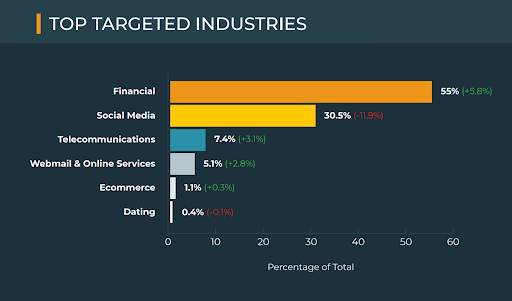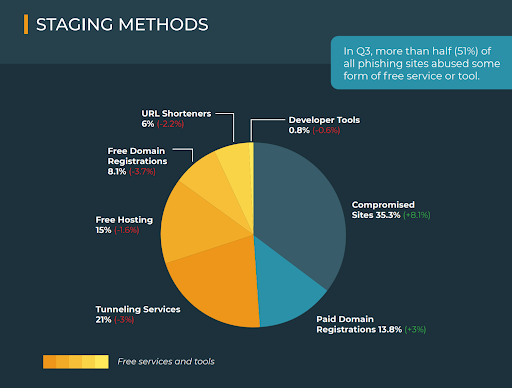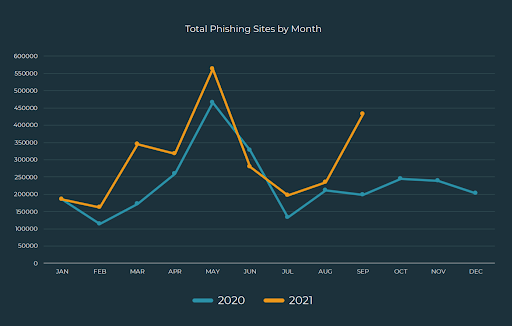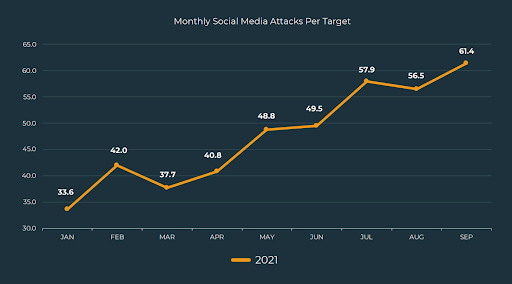A new report from PhishLabs shows just how prevalent cybersecurity threats are amongst popular brands, and common trends being followed by them.
PhishLabs is a cybersecurity analysis firm that focuses on providing awareness regarding threats and bad actors. The firm achieves this via multiple different ways. It publishes research articles on popular cybersecurity threats and common habits indulged in by perpetrators.
Cybersecurity threats are regular, constantly heard about, and they cause far too much damage that can often be irreparable as well. In our current day and age, all important information is stored online. Credit card details, personal addresses, phone numbers, even social security numbers constitute just some of the important information and data that we leave online in our wake. Protecting it is of the utmost importance, and that is exactly the sort of work that PhishLabs helps its customers and users out with.
This current report, entitled the November 2021 Quarterly Threat Trends & Intelligence Report, details just how threats have emerged across 2021, with comparisons being drawn to 2020. Speaking of comparisons, our first metric does just that, displaying that phishing attacks have grown by 32% year over year, and the related vishing attacks have doubled in that same timeframe. For those unaware, vishing attacks are just phishing attacks done over the phone, thus involving the perpetrator’s voice. While one would expect such attacks to go down over the years, due to a generally heightened sense of awareness regarding scams on the internet, what we don’t account for is that such attacks grow and develop as we do. Just as ads are getting smarter, so are hackers, and cybercriminals are willing to more or less try anything if a payday is involved at the end. Phishing attacks affected the financial and social media industries the most, with and incidence of 55% and 30.5% respectively.
Jumping off of phishing affecting social media, the report displays that cybersecurity threats across social media as a whole have grown by a whopping 82% from January of this year. Such platforms and the industry remain a focal point for cybersecurity threats, and are often the originating point for many attacks. Social media is a service that hosts literal billions of individuals, and cyber criminals are very likely to (intentionally) run into individuals that are slightly unaware of, and thus more susceptible to, threats and bad actors. Phishing attacks also continue to be flexible as ever. While compromised websites still remain the most popular form of threat actors, emails, URL shortners, social media messages, and free hosting services are also gaining traction, and even managing to find larger and larger audiences.
Read next: 5 Ways To Protect Yourself While On Social Media
PhishLabs is a cybersecurity analysis firm that focuses on providing awareness regarding threats and bad actors. The firm achieves this via multiple different ways. It publishes research articles on popular cybersecurity threats and common habits indulged in by perpetrators.
Cybersecurity threats are regular, constantly heard about, and they cause far too much damage that can often be irreparable as well. In our current day and age, all important information is stored online. Credit card details, personal addresses, phone numbers, even social security numbers constitute just some of the important information and data that we leave online in our wake. Protecting it is of the utmost importance, and that is exactly the sort of work that PhishLabs helps its customers and users out with.
This current report, entitled the November 2021 Quarterly Threat Trends & Intelligence Report, details just how threats have emerged across 2021, with comparisons being drawn to 2020. Speaking of comparisons, our first metric does just that, displaying that phishing attacks have grown by 32% year over year, and the related vishing attacks have doubled in that same timeframe. For those unaware, vishing attacks are just phishing attacks done over the phone, thus involving the perpetrator’s voice. While one would expect such attacks to go down over the years, due to a generally heightened sense of awareness regarding scams on the internet, what we don’t account for is that such attacks grow and develop as we do. Just as ads are getting smarter, so are hackers, and cybercriminals are willing to more or less try anything if a payday is involved at the end. Phishing attacks affected the financial and social media industries the most, with and incidence of 55% and 30.5% respectively.
Jumping off of phishing affecting social media, the report displays that cybersecurity threats across social media as a whole have grown by a whopping 82% from January of this year. Such platforms and the industry remain a focal point for cybersecurity threats, and are often the originating point for many attacks. Social media is a service that hosts literal billions of individuals, and cyber criminals are very likely to (intentionally) run into individuals that are slightly unaware of, and thus more susceptible to, threats and bad actors. Phishing attacks also continue to be flexible as ever. While compromised websites still remain the most popular form of threat actors, emails, URL shortners, social media messages, and free hosting services are also gaining traction, and even managing to find larger and larger audiences.
Read next: 5 Ways To Protect Yourself While On Social Media






